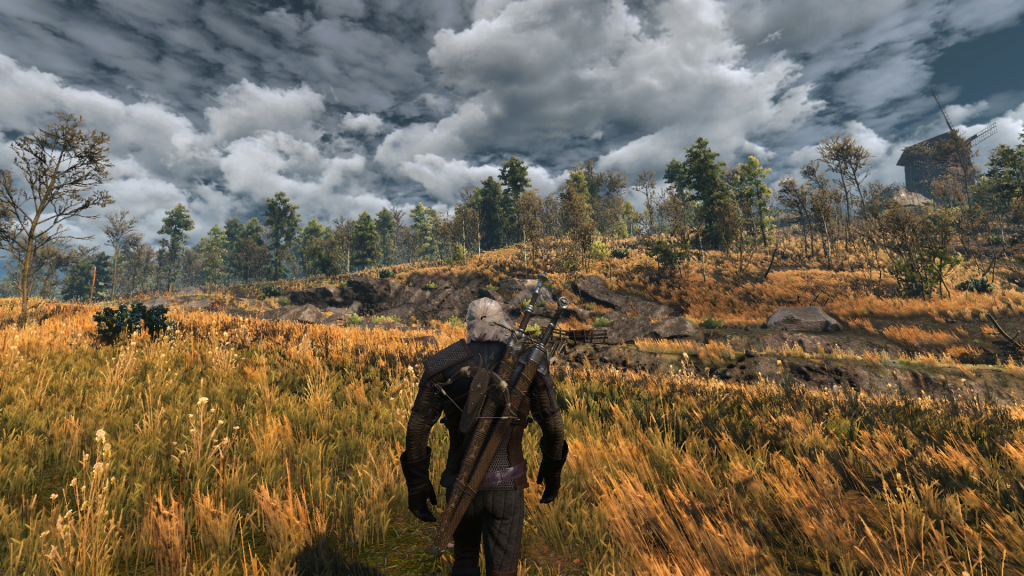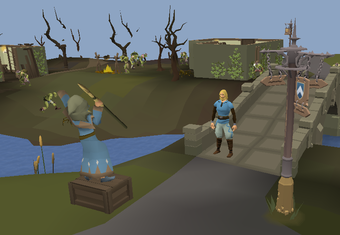Pitch Video
Animation & Game Graphic Influences
In order to successfully analyse my game media texts and understand their seemingly ‘poor’ graphics, I will need to be well versed in the related academic research in this field. Many game studies focus on the psychological or behavioural effects, and do not take into account the aesthetic and interactive appeals of games (Carr n.d. p.2). This is quite interesting to me as a non-game player, as aesthetics is something that would cause me to gravitate to a game.
Animation styles can be influenced by many outside influences, however, textbook good animation can take the player into that games world. Character and environment animations that have been carefully crafted by design teams to be a natural part of the game world, making it feel more alive and safe to explore and experience in full (Johnson 2017 p. 238). The aesthetics of a video game can improve the relationship between the player and the game, and is not just limited to an art form (Atkinson & Parasayi 2020 p. 15).

With all this in mind, the aim of this project is to discuss bad video game graphics. There is a strong link with poor aesthetics and older games – as to be expected. Modern games with retro style graphics can be a source of nostalgia for players. With the continuing success of older games despite the lust lacker graphics, nostalgia plays a huge part in this as it can be a psychological resource of the players sense of self – a digital time machine to their bygone past (Wulf et al. 2018 p.61)

The recreation of vintage games collapse the years of innovation and progress into an easy to package and consume game media text (Gaughen 2014). It is quite interesting that during the process of remaking these games, graphics can still hold true to the previous style.
References
Atkinson, P. and Parsayi, F. (2020) ‘Video Games and Aesthetic Contemplation’, Games and Culture. doi: 10.1177/1555412020914726.
Carr, B 2012, ‘Applying Cultural and Critical Theory to Video Game Aesthetics’, Southwestern Mass Communication Journal, vol. 27, no. 3, pp. 1–25
Gaughen, B 2014, ‘Innovation, Imitation, and the Continued Importance of Vintage Video Games’, Reconstruction: Studies in Contemporary Culture, vol. 14, no. 1, p. 2
Johnson, D 2017, ‘Worlds in and of motion: Agency and animation at the margins of video game aesthetics’, Journal of Gaming and Virtual Worlds, vol. 9, no. 3, pp. 225–241
Wulf, T., Bowman, N.D., Rieger, D., Velez, J.A. & Breuer, J. 2018, “Running Head: Video Game Nostalgia and Retro Gaming”, Media and Communication, vol. 6, no. 2, pp. 60-68.


Reblogged this on Game Cultures.
LikeLike
Awesome blog post Paige! You’ve made really great use of images and gifs to effectively support your post and I really like the cool header image. The level of detail in your pitch video is really valuable, particularly discussing the four blog posts you’ll create in a detailed plan. I can’t wait to see the game graphics art you create yourself! The content schedule you created has inspired me to do that myself, that’s a great way to ensure consistent progress with the Digital Artefact. I also really enjoyed the screen recording style of your video. I used Canva to create the presentation that I used for my Pitch video https://josephinedoylemedia.wordpress.com/2020/09/04/bcm215-digital-artefact-pitch-pantone-games/. The psychology of video game nostalgia would be really fascinating to investigate. This article https://www.psychologyofgames.com/2013/11/the-psychology-of-video-game-nostalgia/ links nostalgia to social connections and therefore because games “feature mechanics or tools that encourage players to share, compete, help and socialize”, they are inherently nostalgic (Madigan, 2013). I am critically analysing the psychology behind colour in mobile puzzle games so that article will be useful for me as well! Another great article you might find useful is ‘Finding Nostalgia in the Pixelated Games of Decades Past’ https://theconversation.com/finding-nostalgia-in-the-pixelated-video-games-of-decades-past-98518 in which I learned that the average age of a U.S gamer is 34 and because most popular retro games have been around for 20 years or more it can be said that those gamers are returning to the nostalgia of “their cherished childhood properties” (Bowman and Wulf, 2018). Well done linking credit to the sources of all the photos in your post. However, its really important to make sure you’re linking to all the great academic sources you discuss throughout your post so readers can see what you’re referring to. Great post Paige, looking forward to seeing the progression of your project!
LikeLiked by 1 person
Hey Paige! First of all love the topic for your DA as games’ graphics is something that I would definitely interested by. I completely agree that games with more simplistic or a little dodgy graphics do provide a feeling of nostalgia. Retro games have definitely been making a comeback like the Sonic the Hedgehog “Classic” (https://apps.apple.com/au/app/sonic-the-hedgehog-classic/id316050001 ) game which is now available on iOS, which provides the brightly coloured larger pixelated graphics that we know and love from our Game Boys or DSs.
The reason I bring up this game being available on iOS is because I think this could be an interesting angle to add to your blog posts. The devices we play games on have a big impact on our experience, which is included in how we interpret the graphics. For instance why would you choose to play a “classic” version Sonic the Hedgehog on your iPhone instead of on a Game Boy, as although we want the retro aesthetics for the nostalgia, we also want a clean, crisp and smooth running game.
The video “24 Sonic Games, 24 Consoles” (https://www.youtube.com/watch?v=ulnlO8yLRZU&list=UUhWTjJDu743PSfbUebQPBeg&ab_channel=SonicCentral ) is a good example of this, as when you run through the many Sonic games the graphics get better and more detailed then all of a sudden you jump back to the 16-bit styled Sonic in Sonic Mania, except the graphics are crisper than the original Sega. It’s obvious this nostalgic throwback was successful as Sega almost doubles their sales in comparison to the previous year just from Sonic Mania alone (https://en.wikipedia.org/wiki/Sonic_Mania#:~:text=It%20greatly%20increased%20Sega's%20third,copies%20worldwide%20across%20all%20platforms. ). So I think it would be a good idea to assess the changes in graphic style as they change from different devices in your analytic blog posts.
The source “Post Digital Games: The Influence of Nostalgia in Indie Games’ Graphic Regime” (https://iris.unito.it/retrieve/handle/2318/1609727/257234/Post-Digital%20-%20Mattia%20Thibault.pdf;jsessionid=E1D047E3C92304A2DA02C78C5F9733CB.suir-unito-prod-01 ) points out how these simpler styles of rendering are cheaper and easier, but they are also aware that people want the nostalgia of past technology and celebrate the “digitalness”. Your third section on fan interpretation would be good to read reviews and discussions to see if this source is correct in identifying consumers wants.
I am really interested to see more, and can’t wait to see your digital art skills!
LikeLiked by 1 person
Hey Paige! This is absolutely fantastic. You’ve done so much research already and it really seems like you’re on top of things. I love this idea so much and I truly can’t wait to see your final DA.
You spoke briefly about aesthetic, but I think to gain a more rounded perspective, you should look into aesthetics as a whole. Remember in first-year the idea of aesthetics? How it’s not necessarily high quality, but rather is appealing for different reasons? I think looking into aesthetics as a whole will be really relevant to you. Like glitch art, old, clunky looking games have some kind of appeal to a lot of people. Even though Mario has developed into what we see in Odyssey, the 8-bit Mario merchandise is still very popular, as is the arcade aesthetic in general.
This 2012 article by Independent might be relevant to you as it directly speaks about why ugly is the new beautiful (not in video games but in general). https://www.independent.co.uk/arts-entertainment/art/features/ugly-is-the-new-beautiful-from-aesthetic-monstrosity-to-design-masterpiece-8219717.html
I’d also go back to the ‘Slots of Fun, Slots of Trouble’ reading from week two. It isn’t super relevant to you but it might help you to understand why arcades were so popular thus helping you understand the arcade aesthetic.
Keep up the great work, Paige! This is fantastic.
LikeLiked by 1 person
Hi Paige, I love the idea that you’ve presented. Your pitch video was super detailed, informative and went into great depth. Video game graphics play a major part in the success or potential downfall of a game. I remember when Minecraft was first becoming popular, it was commonly disregarded for having “bad” graphics but look at where it is today. If you were looking for more examples of games plagued with bad graphics I recommend checking out the large catalogue of Nintendo Wii games that were rushed out purely to profit off the success of the console https://www.lifewire.com/reasons-the-wii-sucked-2498585. It is also important for you to look at these games through the lens of the time period it was produced. In your blog post, you mention how nostalgia has a huge influence which had actually brought back a memory from when I went to Japan at the end of last year. We had gone to a retro game store and had got into a conversation with the store owner and the topic of video game graphics had come up. He was saying that when he was younger the graphics of some of the games were the best at the time. Even though new videos game graphics these days are way more advanced due to being developed with the best technology, he always goes back to the retro games as the nostalgia and memories of it, is a lot more significant and special to him.
Really interesting topic, excited to see the progression of it!
LikeLike